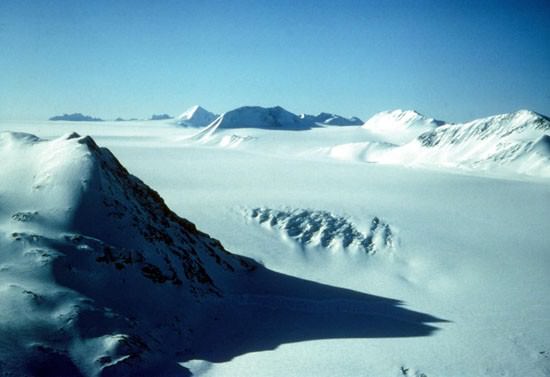[/caption]
Thanks to a grant from the National Science Foundation, a University of Washington doctoral student named Adam Campbell has been conducting a research on photosynthetic algae. While this simple, light-loving form of life might not seem very important, it very well could have survived the global ice age by hiding in an area similar to the Red Sea.
“Under those frigid conditions, there are not a lot of places where you would expect liquid water and light to occur in the same area, and you need both of those things for photosynthetic algae to survive,” said Campbell.
How could this slice of ice endure against the massive force of a glacier? If there was a thin body of water about six and half times longer than it was wide, it would be possible for it to create enough physical resistance to stop a moving ice sheet. Chances are good that the ice would vaporize before it reached the end of the sea. This means at least enough open water for algae to survive.
“The initial results have shown pretty well that these kinds of channels could remain relatively free of thick glacial ice during a ‘snowball Earth’ event,” Campbell elucidates.
Through the use of an analytical model that simulates environmental conditions theorized to exist somewhere between 800 million and 550 million years ago, Campbell and his team of Edwin Waddington and Stephen Warren, UW professors of Earth and space sciences, were able to simulate ten million years of deep freeze. Their timeline began before the Cambrian explosion about 530 million years ago when Earth quickly changed tactics and became more heterogeneous. However, simple photosynthetic plankton have made their presence known in the records both before and after this studied time period… a presence which made scientists wonder how it could happen if the Earth had been totally covered in ice.
Campbell said it is assumed the algae survived these episodes, “unless they re-evolved each time, which creates a whole different problem for evolutionary biology.”
Why chose the Red Sea as an example? Quite simply put, because it’s perfect. It formed from a tectonic process called continental rifting, existed in the right time line and was correctly globally positioned. Campbell also noted that in a snowball Earth event, the exposed sea would have quickly evaporated if there weren’t a method of refill – such as created by a dam of glacial ice. Just a small amount… like enough to last 10 million years for the algae to take hold.
“Over 10 million years, you could evaporate the deepest lake in the world,” Campbell said. “If you’re in a desert, you’d have to have a supply of sea water.”
Original Story Source: University of Washington News.

